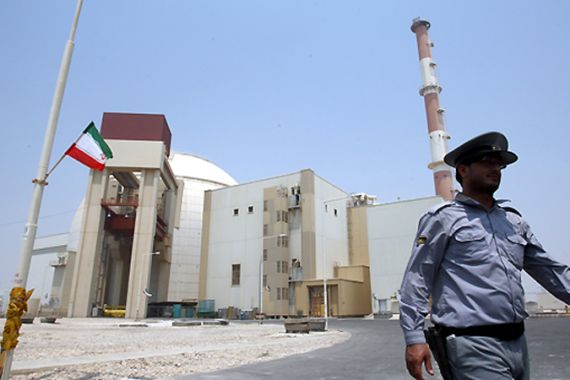Iran nuclear reactor reaches ‘full capacity’
Official says country’s sole operational nuclear power reactor, the Bushehr plant, is now fully operational.

Iran’s sole operational nuclear power reactor has reached full capacity, a senior official has said.
Mohammad Ahmadian, Iran’s deputy nuclear chief, said on Saturday that the reactor at the Bushehr power plant was brought to its “full capacity of 1,000 megawatts” on Friday evening.
Keep reading
list of 4 itemsRescuers search rubble after over 300 buried in Papua New Guinea landslide
Aftermath of deadly landslide in Papua New Guinea
How do you find a bride? The new struggle in crisis-hit rural India
The Islamic Republic built the nuclear power plant in the southern Iranian port city with Russian help.
The reactor went into operation for the first time last year at minimum capacity.
Russia’s state nuclear corporation Rosatom also said on Friday that the Bushehr plant was fully operational.
The facility is a cornerstone of Iran’s drive to become a technological leader among Muslim nations, with efforts such as an ambitious space programme and long-range missile development.
Iran also runs smaller research reactors and is building another power reactor.
The US and some of its allies believe the Bushehr plant is part of an Iranian attempt to develop nuclear weapons, an accusation Iran denies.
The oil-rich country says electricity generation is the main motivation for its nuclear work and that it is for peaceful purposes.
The Bushehr plant is not considered a major proliferation threat by nuclear inspectors whose concern is focused on sites where Iran enriches nuclear fuel, in defiance of UN Security Council resolutions demanding it stop.
Nuclear weapons fears
The Bushehr project dates back to 1974, when Iran’s US-backed Shah Mohammed Reza Pahlavi signed a contract with the German company Siemens to build the reactor.
The company withdrew from the project after the 1979 Islamic Revolution brought hardline clerics to power.
In 1992, Iran signed a $1bn deal with Russia to complete the project and work began in 1995. Since then, the project has been beset by problems linked to construction and supply glitches.
Under the contract, Bushehr was originally scheduled to come on stream in July 1999 but it was repeatedly postponed over technical glitches and financial disputes.
The reactor finally went into operation last summer operating with minimum capacity to undergo tests before full operation.
The US for years urged Russia to abandon the project, fearing it could help Tehran develop nuclear weapons.
Those concerns were eased by an agreement under which Russia will supply enriched uranium for the reactor and repatriate spent fuel that could be reprocessed into weapons-grade plutonium.
Russia sees Iran as a counterweight to Washington’s clout but is also a partner of the US and four other powers in efforts to rein in Tehran’s nuclear activities.
The UN nuclear agency said this week that Iran, in just a few months, had doubled the number of uranium enrichment centrifuges it has in an underground bunker, showing Tehran continued to expand its nuclear programme despite Western sanctions and the threat of an Israeli attack.